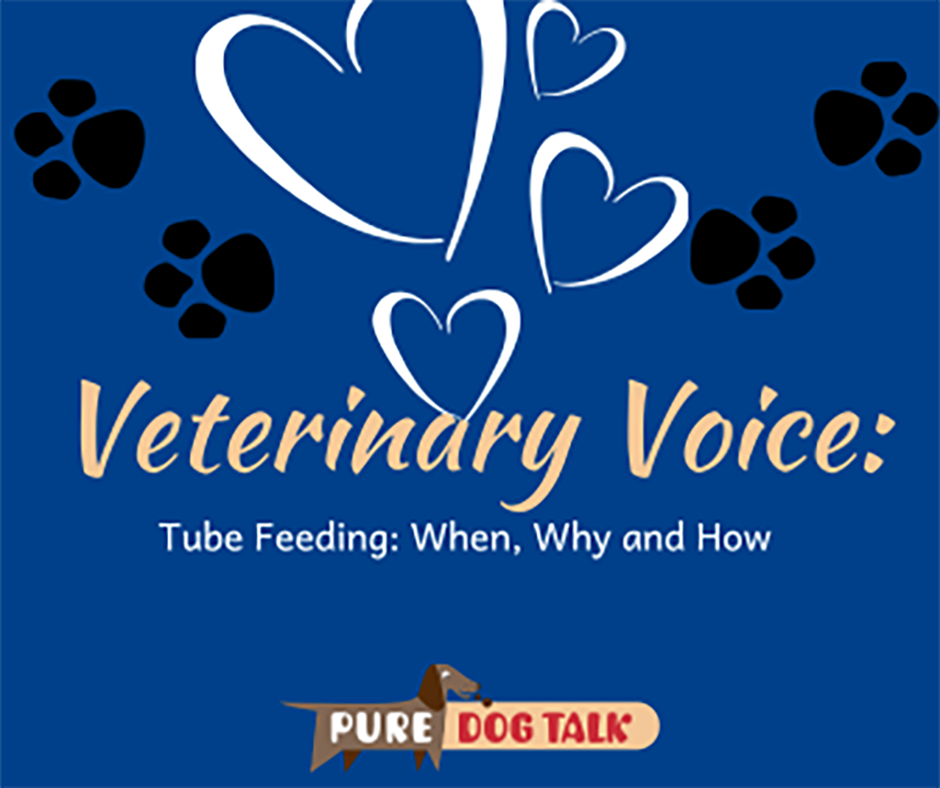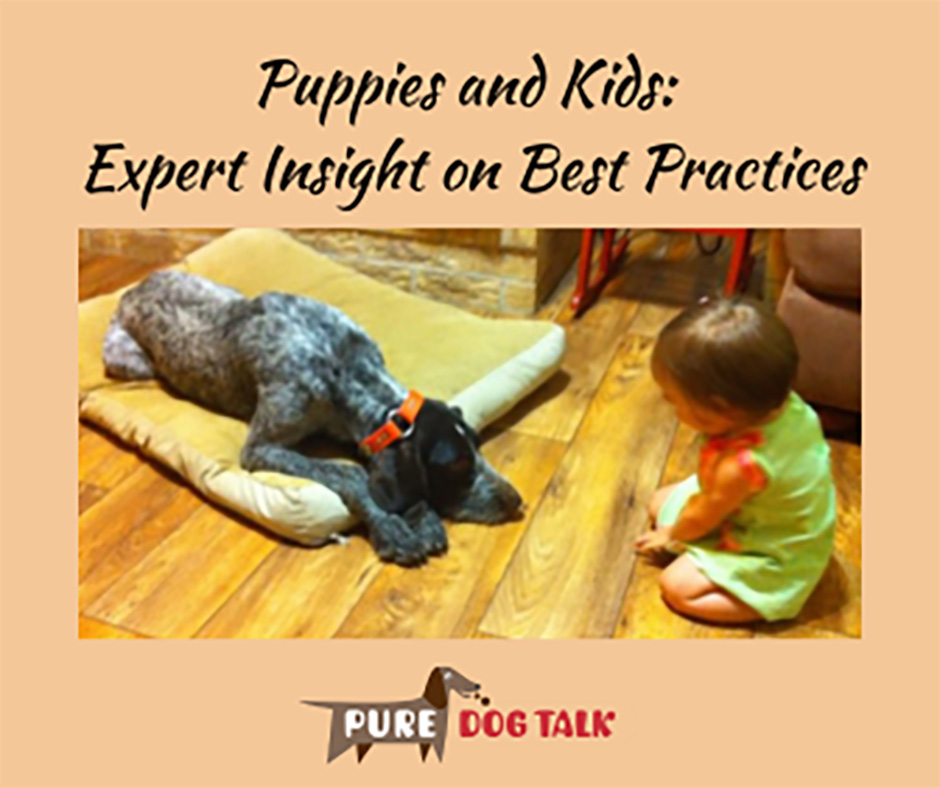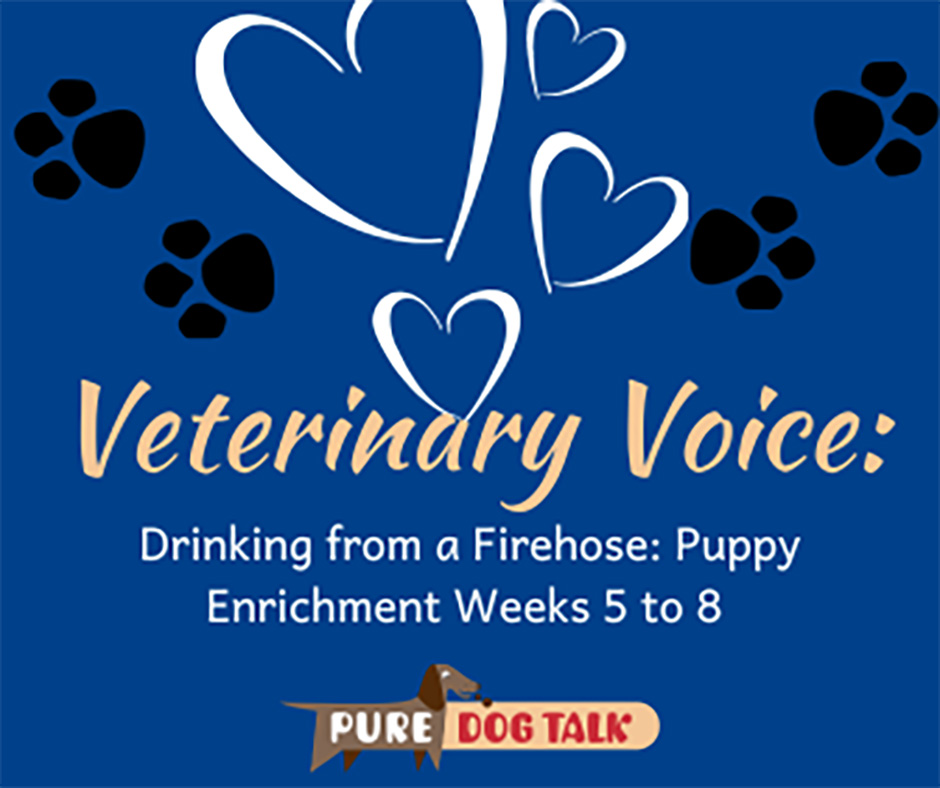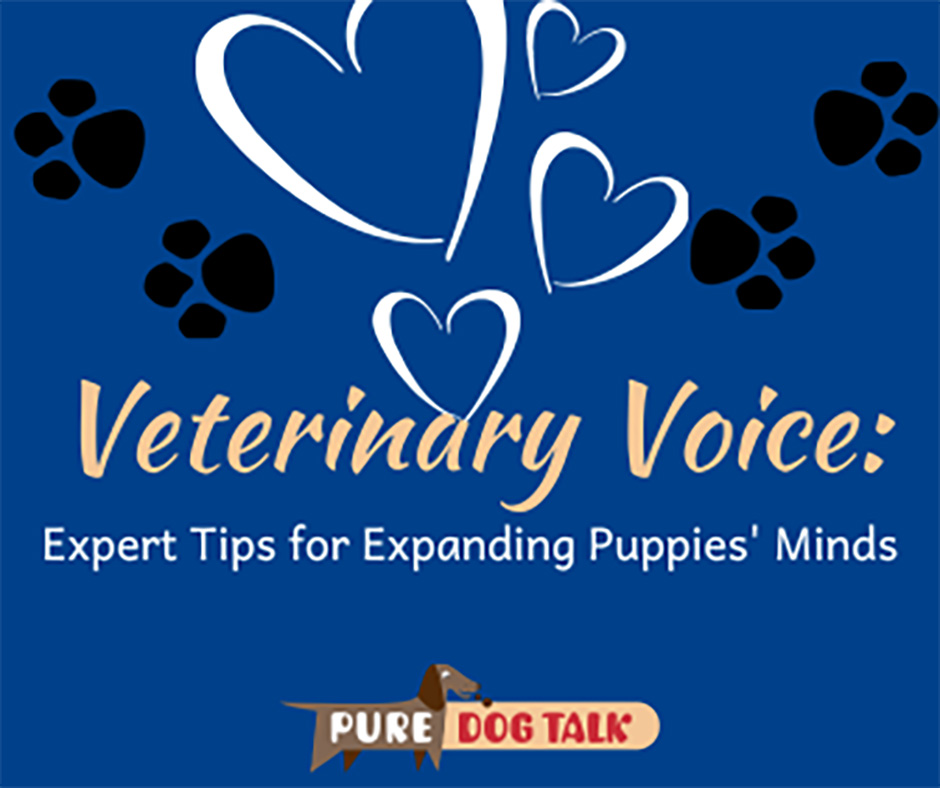715 – Whelping Box Foundations with Dr. Marty Greer
Whelping Box Foundations with Dr. Marty Greer
Host Laura Reeves is joined by Dr. Marty Greer to discuss whelping box foundational elements. From heat sources to bedding to disinfecting, this is “must have” information for all breeders.
“All whelping boxes will have a heat source and a surface that’s easy to keep clean and disinfected,” Greer said. “We’ve used the whelping nest as a heat source. There’s other companies now that make them and if you don’t have electricity they make them propane powered. They make them powered on DC batteries so you can get alternative sources and it might not be a bad idea to have that as an alternative source if you normally have electricity but you’re in an area that may have frequent outages and you’re expecting puppies.”
The heat source should NOT be a heat lamp due not only to fire danger but to the inherent dryness of the environment they create, which can reduce necessary hydration for the puppies.
“You want to make sure that you’re disinfecting,” Greer said, “and you’re using the right disinfectant with the right dilution or concentration. If it’s required to be rinsed that you rinse. So read the label directions and don’t mix Clorox with anything else. Don’t mix your stuff.
“So first you’re going to have this surface that’s heated and you’re going to have a disinfectant surface and then you need something absorbent. Because even when the female is cleaning up after the puppies, puppies still will have urine, they’ll have stool. And so you need something absorbent, especially in the first 3 or 4 weeks.
“If I cannot tell you anything else, please, no newspaper, no shredded paper. Traction. There’s nice fleeces that you can put in the box, those work well. I like the absorbency of the repeat pads, and they’re a lot easier to launder than the big fleeces. The fleeces, you have to go to the laundromat if they’re really huge, because they won’t fit in your typical washer and dryer. And then what I put on top of those is I’ll put an absorbent material down, like the Repeat pads that Revival has. And then I put down bath mats.”
681 – Tube Feeding: When, Why and How with Dr. Marty Greer
Tube Feeding: When, Why and How with Dr. Marty Greer
Dr. Marty Greer joins host Laura Reeves for a run down of when, why and how to tube feed neonates.
New born puppies who can’t or won’t nurse for whatever reason may be fed with a tube passed directly to the stomach.
“I just want people to know that dying of starvation is not an option at my house,” Greer said. “Different people have different thresholds and that’s my threshold, is you are not going to die of starvation.”
Marty and Laura walk through the “why”s of tube feeding, along with when to make that decision, what to do and what not to do.
“Usually it’s just for a few days,” Greer said, “sometimes a week or two until they catch on, start latching, start gaining and then they do great. But some dogs are slower than others and I see some puppies that are just really slow to grow. They may be half the size the littermates. And again, they may have swallowing defects. There is a lot of things that (can cause puppies not to nurse well.”
Greer cautions that all puppies should be checked for cleft palate to rule out that as a cause for failure to thrive/nurse well.
“Number one is pre warm the puppy. The puppy needs to be at least 96° on a rectal thermometer. Do not feed a cold puppy #2 is pre warm the formula. Number 3 is pre measure the tube. You measure the tube from the tip of the nose to the last rib. Have a marker or piece of tape, something that you mark on the tube so that you know exactly how far the tube has to be to go to the last rib because the stomach is behind the last rib. The trachea divides about halfway there, so if you’re only in halfway, you could be in the trachea. If you’re in all the way, you have to be in the stomach.
“When you pass the tube, you keep the chin down and you pass to the left. A lot of people throw the puppy’s head up and look in the back of the oral cavity. And if you do that, you open up the airway. So keep the chin down so that you close the airway, you pass it to the left because the esophagus is left of the trachea. So go to the left.
“And then the most important thing before you feed is you pinch the puppy on the tail or the toes and make sure it can cry and you can hear it vocalizing. If the puppy can vocalize, you’re in the esophagus. If the puppy can’t vocalize You could be in the trachea, so pull out the tube, take a deep breath, go get a cup of coffee, come back and try passing the tube again. Those tips will keep you out of trouble 99% of the time. Is there a guarantee? Absolutely not. But I’m going to guarantee you that your puppies aren’t going to thrive if they don’t get enough calories.”
Marty’s video and more details on Revival Animal Health’s Learning Center.
645 – Puppies and Kids: Expert Insight on Best Practices
Puppies and Kids: Expert Insight on Best Practices
Dr. Marty Greer, DVM and host Laura Reeves talk about bringing home your new puppy, introducing it to your children, how puppies and children interact appropriately, and how to make that be a really positive experience.
“The first place I would start,” Greer said, “is if you don’t already have a breed that you have selected and you have children, pick a breed that’s good with kids.
“You know, why start off with something that’s likely to set you up for a failure when you could get, oh, let’s say a Labrador or a Golden Retriever, which are notoriously outgoing, happy dogs, and, you know, they’re just easy to live with. They’re great dogs to have her own children. So, you know, don’t start off, and I don’t want to badmouth anybody’s breed, so I’m not going to specifically call up breeds that aren’t good, but don’t start off with a dog that you have concerns about.
“Start out with something that’s happy, friendly, outgoing and was raised in an environment that’s likely to be successful.
“There are situations where if the kids are inappropriate with the dog or really afraid of the dog or the parents aren’t working well with the children, that I just simply have to say to them, ‘you know, this is probably not a good match. Let me help you find another breeder.’
“For starters, I don’t leave the children and the dog unattended ever until maybe the dog’s five. That’s what what XPens are for. That’s what playpens are for. That’s what crates are for. And you can put X-Pens up across doorways.
“And it’s also a great way to introduce a dog to children or a puppy to children. And vice versa, they can see each other without the puppy jumping on the child, without the child shrieking, without the child having a meltdown, or without the child doing something else that’s inappropriate with the dog. So it’s a really safe way to start off is for them to see each other and interact with one another, but through the xpen or through the crate.”
Marty and Laura talk through dog body language, bite inhibition training in baby puppies and the sheer joy of kids and dogs raised together.
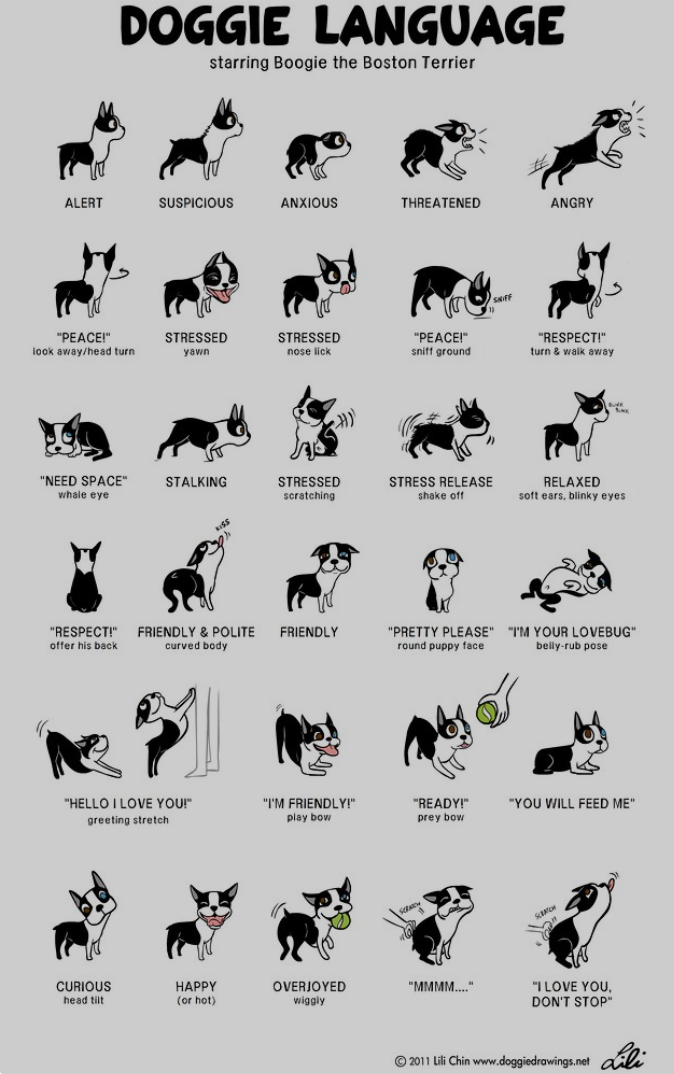
The Dog Body Language Chart Marty Greer recommends.
640 – Drinking from a Firehose: Puppy Enrichment Weeks 5 to 8
Drinking from a Firehose: Puppy Enrichment Weeks 5 to 8
Dr. Marty Greer joins host Laura Reeves for a continuation of their conversation about puppies and neonates. Puppies raised properly are given the best possible start to their future. Today’s topic is enrichment, all of the things that we can do in the five to eight week period between “their eyes are open, they’re eating solid food, they’re probably weaned or close to it” and go-home day.
Laura asks, “What’s happening in those little tiny puppy brains in that five to eight week period?”
Marty’s response is, “They’re taking in the world so fast, it’s like drinking from a fire hose.
“There’s a lot of people who talk about this and a lot of people who pontificate about it. I think Sophia Yin talked about a hundred experiences in a hundred days. That gives you basically three months to get all kinds of information into their little brains.
“Even when you don’t think you’re teaching your puppy something, you’re teaching your puppy something. And so I think we have to be ultra aware of even the things that we do when we have our back turned that if we’re making dinner or there’s a puppy jumping on the other puppy or there’s puppy going potty on the floor because they didn’t get our attention to take them outside. We just taught them something.
“You have to be ultra aware of everything you do. Not paying attention to them doesn’t mean that they’re not learning something. I think we really have to pay attention to that and there’s lots of really fun things we can do to teach them cool stuff, but be careful, because they’re learning every second.
“If they learn that they put their feet on the breadboard and pull something off (the counter), even if you weren’t looking, they just learned they can put their feet on the breadboard. And if it takes them 100 tries to get one thing the next time, it’s like winning the lottery.
“We think about our little tiny puppies and there’s all this stuff going on. They’ve got littermates, they’ve got other dogs in the house, they’ve got smells, they’ve got sounds, they’ve got all this stuff. You don’t want them to hear the ketchup bottle make that funny, squirty noise when it’s almost empty when they’re in their new home for the first time and it freaks them out.
“So you have to really think about all the input that we want to have for our dogs. How do we set them up for success? How do we provide them those things? So I do smell, I do touch, so I give different surfaces, we do different visual things, we do different toys, there’s different tastes, so there’s so much we can do.”
639 – Puppy Brain: How Our Dogs Learn, Think and Love
Puppy Brain: How Our Dogs Learn, Think and Love
Author Kerry Nichols joins host Laura Reeves for a review of her new book, “Puppy Brain: How Our Dogs Learn, Think and Love.”
Nichols’ book is written for the dog buying public to help them understand how to find a breeder, what a responsible breeder looks like, how puppies learn, and how breeders and buyers can work together to raise well-adjusted dogs.
“We all know you have to prepare your families,” Nichols said. “Like the more prepared your families are the better your puppies’ lives will be. So from litter number one, I started to joke around ‘hey, you know you’re enrolling in Nicholberry boot camp. If you’re not ready to read and watch and listen I’m not the breeder for you, because I really want you to be ready.
“That actually evolved into requiring that our families take a training course, you know, I really want them to be prepared because we’ve all seen it go badly when they’re not and you send home this lovely puppy who very quickly gets into trouble and that’s heart -wrenching to see.
“I had this whole backlog of a private blog that I was keeping for our families and basically they needed to read a pretty hefty article or watch a video every day for the eight weeks that their puppy was growing.”
As a content creator, Nichols has proven suggestions for breeders also about how to grow their educational social media outreach about their breed and their breeding programs.
- It’s a marathon not a sprint … don’t think that you’re going to post 10, 50, 100 posts and you’re going to get this following. It is consistency, consistency, consistency.
- Authenticity, which is why I think it doesn’t work to hire a social media manager.I’ve had arguments with people on this topic, but there’s no way I could have never hired anybody to do what I do because, it’s all in my DMs. I’m responding, it’s in my comments, I’m interacting. And that’s fantastic because the questions will inform your content.
- I think it’s super important that breeders allow people to see what they’re actually doing on a daily basis.Yesterday, someone asked me to vet a breeder for them of a different breed, and I went on the website and it said that they followed puppy culture protocols. And they have a big following on Instagram, but I couldn’t find a single video that demonstrated puppy culture protocols.So that’s fine to say it, but I don’t just trust that they’re doing it. I want to see them doing a barrier challenge, right? So I’d say that, show what you’re actually doing.
632 – Expert Tips for Expanding Puppies’ Minds
Expert Tips for Expanding Puppies’ Minds
Dr. Marty Greer, DVM joins host Laura Reeves for their ongoing conversation about raising puppies. This month they’re talking week four, when the puppies’ minds are exploding with new sensory input.
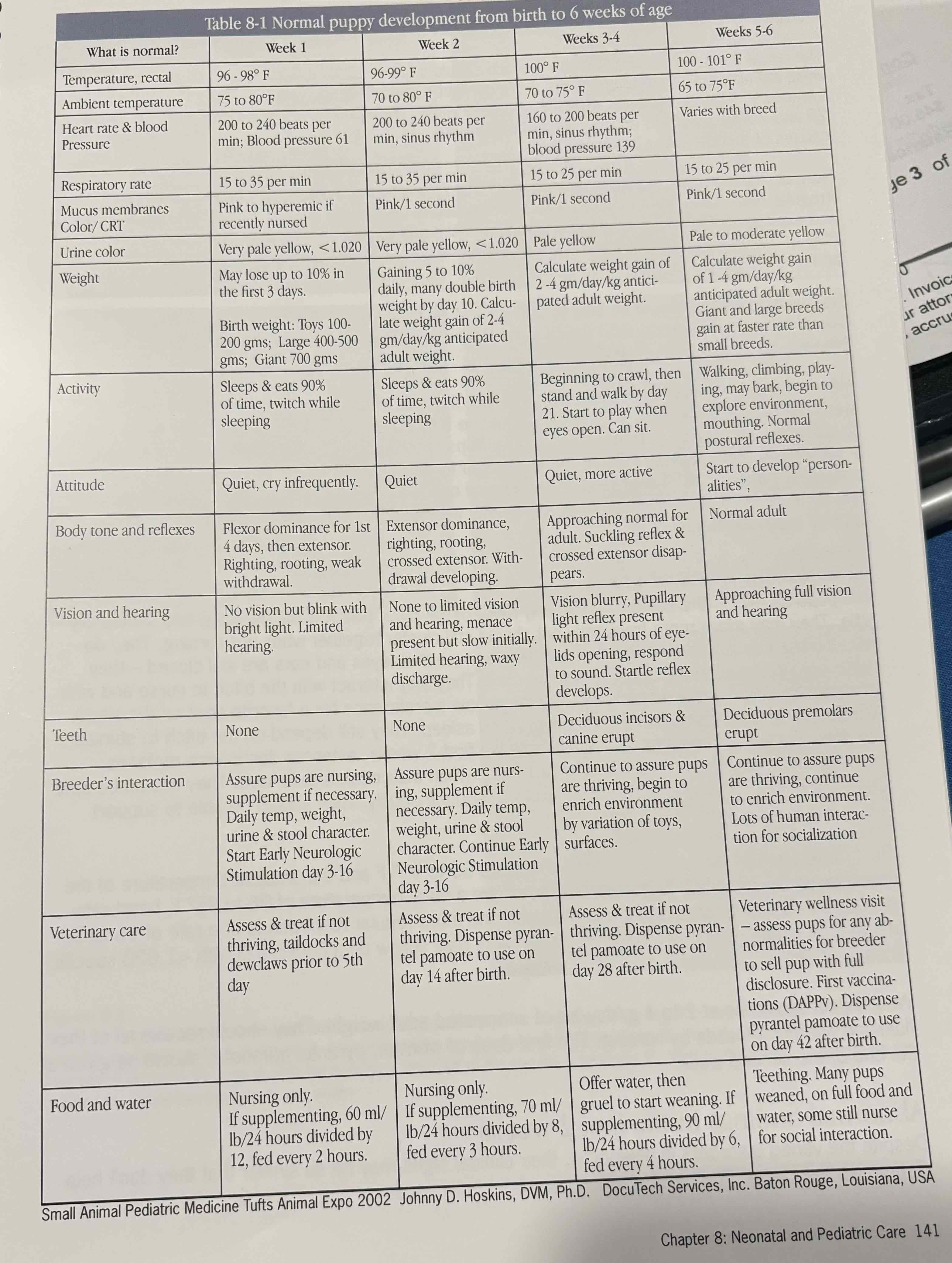
From Dr. Greer’s “Canine Reproduction and Neonatology”
“When the puppies first open their eyes, first open their ears, we should have gentle lighting, we should have gentle sounds,” Greer said. “We shouldn’t just have this loud TV with Rambo on. So, you know, things like just have the lights starting to come up, their vision isn’t great, their hearing isn’t great, but it went from almost nothing to something and so we want to ease them into that world.”
Four weeks is when many puppies are introduced to solid food. Mothers of wild canids vomit for their puppies as their introduction to solid food. Laura describes making puppy food the “consistency of dog vomit.”
Marty recommends shallow water bowls for puppies to prevent drowning hazards, as well as Lixit bottles for smaller breeds.
100 experiences in 100 days
“I try to do a lot of variation in the enclosure. I have a rabbit hutch that’s got a two story ramp on it so they can go in and out of doors and up and down the ramp. I have all kinds of little beds that have holes and places for them to go. Honestly the best toys are the kids’ toys that I pick up at garage sales. So you pick up, you know, baby walkers and all kinds of toys and they’re brightly colored and they’re hard plastic. They’re not durable enough for the aggressive chewer or adult dog. So you probably don’t want them in with mom if you’ve got a lab that eats everything, but they’re fun. They make interesting noise and you can do variability.
“I think both Sophia Yen and Ian Dunbar, veterinarians that talk a lot about behavior and development, talk about a hundred experiences in a hundred days.
“I have a series of 11 bath mats that are all different sizes, shapes, colors, textures. The mesh ones I put under the puppies when they’re really young because the urine runs through and so they stay dry. When you’re in that transition period between when mom stops cleaning them, that two to four week transition period when they start urinating on their own, they stay dry and it doesn’t soak into a pad directly on their skin so it’s cleaner and neater.
“And those again can go in the washing machine. But I went to Walmart during COVID and they had 11 styles of bath mats. They had some with bristles, they had some that were shiny, some with round holes, some with square holes, some were dark colored, some were light colored. Just this whole variety and again I throw them in my washing machine when they get soiled and then I hang them to dry. And I have two sets so that they can rotate through. And you’ve just given now a puppy 11 different surfaces, so of the 100 experiences you need to do in 100 days, you just did 10 percent of them, with a bath mat.”
619 – Puppy Evaluation System Developed by a Woman Ahead of Her Time
Puppy Evaluation System Developed by a Woman Ahead of Her Time

Virginia Apgar, who named the newborn evaluation system.
Dr. Marty Greer, DVM joins host Laura Reeves for their ongoing puppy discussion. This month Greer shares the story of Virginia Apgar, who named a now-famous newborn evaluation system after herself.
Apgar was a human anesthesiologist who graduated from medical school in the 1930s, Greer noted.
“She was the first female anesthesiologist admitted to the College of Anesthesiology back in an era where there were no women doctors. There were no women a lot of things. So she was truly remarkable, Greer said.
“In that era, a lot of babies were born to mothers that were sedated or anesthetized. And so (Apgar) developed a scoring system to analyze the babies and it has stuck for the last 70 years and it’s very impressive that it’s something that people talk about every day, still using the word APGAR. The acronym stands for: appearance, pulse, grimace, activity and respiration.”
The system was adapted for small animal veterinary use by a vet on staff at the University of Minnesota.

Parameters for APGAR scoring.
“The advantage of a numerical score,” Greer added “is that it gives you something that you can measure and compare litter to litter, puppy to puppy within the litter over the course of time. And we have some really good data from Neocare, which we talked about last time, about what the relationship with the APGAR score and the survival of these puppies will be. So it’s actually super cool that you can take all this information and turn it into something that you can use at home, you can use at your veterinary clinic, and that your veterinary clinic can help you with. So I would encourage people to learn to do APGAR scores. It’s not hard, it’s not mysterious. It’s really pretty straightforward on what to do with it.

Treatments for common whelping issues.
“The value of this is when you go home (from a csection, for example) and you have a puppy that had an APGAR score of a four and a puppy that had an APGAR score of a nine, that you know the puppy with the four needs a lot more attention to have the kind of survival rates that one would hope for. We always hope for a hundred percent (survival), but reality is 100% is probably not a realistic goal.
“Each of the five parameters, appearance, pulse, grimace, activity and respirations gets a score of a zero, one, or a two. So collectively, if you get twos on all five of your items, you have a score of a ten.
“It’s really simple to do. It doesn’t require high level assessment and like I said, a lot of us probably are intuitively already doing this. When you have puppy born, if it’s fish breathing and gasping and gaping, that’s not good. But, if it’s got nice pink color and it’s wailing and it’s crying and it’s wiggling and it’s pink and it’s all those things, you know that you’ve got a puppy that’s in pretty good shape. But it’s just nice to be able to give it a more numerical sign because that gives you data to work with.
“The average puppy is gonna be seven and up. It does give you a numerical score. The value of this is knowing that from the Neocare information, that’s from the University at the Toulouse -France Veterinary School, the puppies with an APGAR score of less than seven have a 22-fold increased risk of death in the first eight hours after they’re born.
“And they also know that puppies with APGAR scores between a four and a seven can achieve a 90 percent survival rate with the appropriate interventions. So, what does that mean? That means you suction them, you put them in oxygen, you make sure that they’re staying warm. You’re doing all those things that you already have been trained to do to help with puppy resuscitation so that they’re not just you know laying in the whelping box kind of hoping that they do okay.”
Greer’s seminal book “Canine Reproduction and Neonatology” is available HERE.
605 – LIVE Debate: Should Professional Handlers Be Allowed in BPUP?
LIVE Debate: Should Professional Handlers Be Allowed in BPUP?
Our final installation for Spicy October is a LIVE@5 debate between an owner handler and a professional handler regarding the hot topic of the rules around the BPUP, 4-6 months puppy competition.
Natalie Thurman, owner handler:
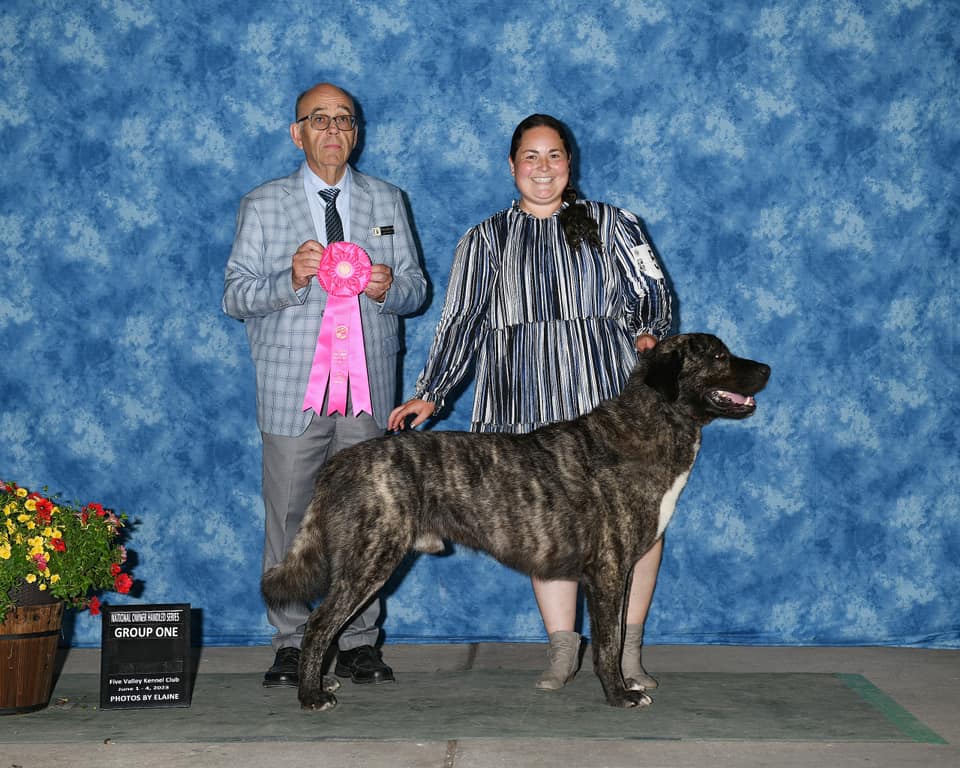
Natalie Thurman and Ares winning Owner Handled Group.
I do think that there are people who start out and it is intimidating to go up against the Laura’s and the Karyn’s of the world because you just make it look so easy and then we try to go do it and then it’s not as easy. Not even a little bit. I mean I know it’s why we have owner handled groups. But if you’re not getting to the owner handled group either BPUP could be a good place to feel safe as a non-experienced dog show human.
Karyn Cowdrey, professional handler:
I believe everyone should have the opportunity, including breeder owner handlers, to show in BPUP. Why? Because the fact of reality of our life today is there are fewer and fewer handling classes people can get to. As handlers, often we’re the ones teaching the handling class and we don’t get to work our dogs in the environment. As a handler, it is important to me that my puppies that I own, that I bred, that I decided to keep, get the best experience they can in the
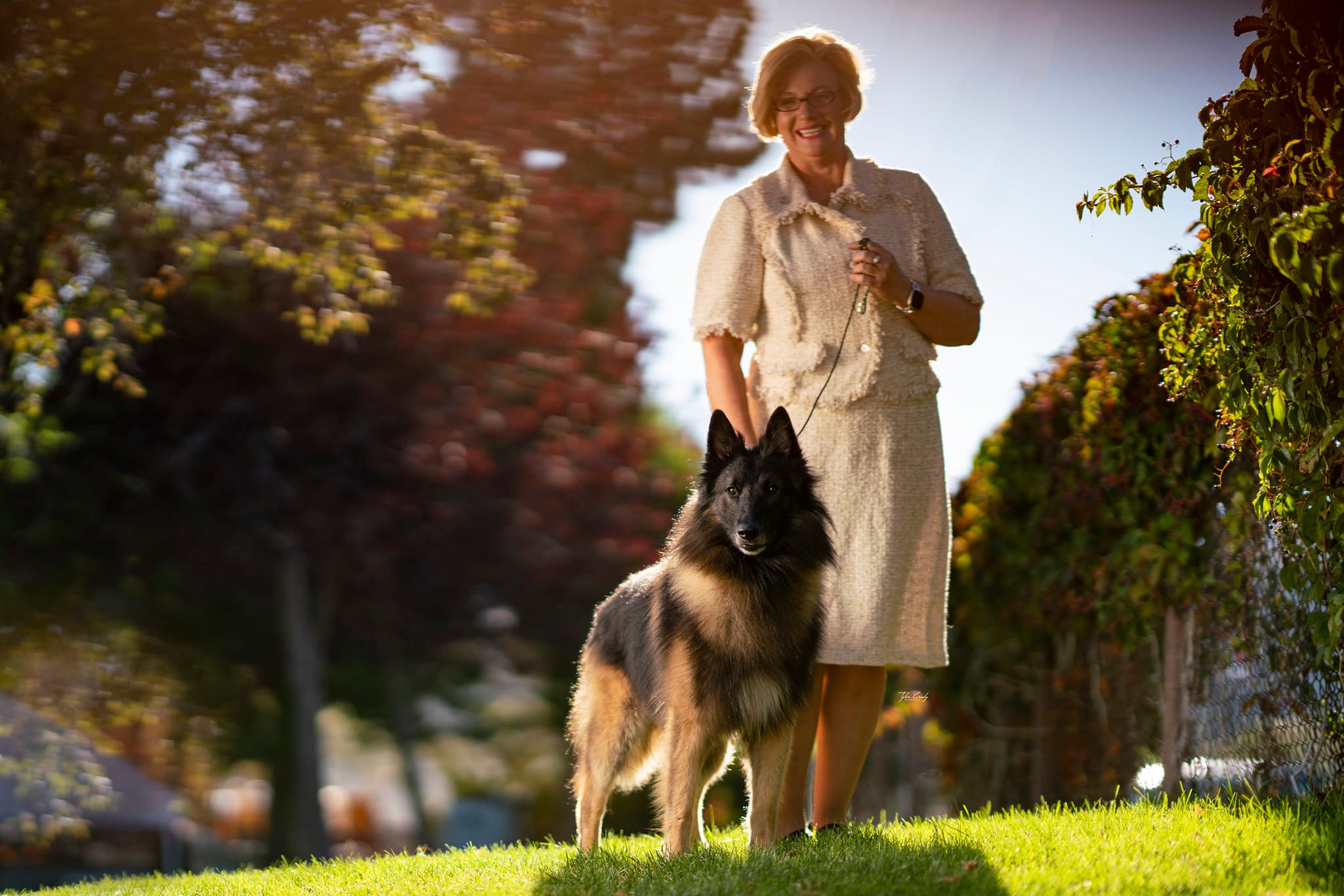
Karyn Cowdrey, BlackFyre Handling Services.
start of life in the ring. I shouldn’t have to hand them off to a total stranger.
Laura Reeves, host and moderator:
The concept (of BPUP) is that the American Kennel Club wants to support the novice handlers and that the simple presence of someone more capable than they are, whether they be a professional or a breeder or what have you, is unnerving. And I don’t know that that’s a great solution. I think we all learn by being challenged, but I know it is something that is a thing.
AKC gets banged a lot for not being encouraging and inviting and we as the representatives of the AKC get banged for the same thing. I sincerely believe that for people who think it is a big deal, they should get to do that. They should get to have that moment.
Hope is what gets us and keeps us. And I guess that’s what I would pin Best Puppy to. Is that baby inkling of hope. That tiny tingle of hope that the very new person gets when they get their first puppy.
And they are so excited and they don’t know what the hell they’re doing. And their breeder’s probably shoving them in the ring. And they’re really encouraging them to do this. It’s hope. And I guess to me, when I judge it, when I see it, best puppy to me represents hope. It represents the hope that we as breeders have for those puppies that are in the ring. It represents the hope that those owners and handlers have for their new puppies. It’s hope.
BPUP represents the hope that those owners and handlers have for their new puppies. It’s hope.
The part of me that thinks that hope is important, thinks that owner handled being what is important and encouraging new people being what’s important, I see the argument to make it a quote -unquote safe space from professionals.
Join us for the full replay of this spicy hot topic.
594 – Temperament Testing for Better Puppy Placements
Temperament Testing for Better Puppy Placements

Hannah Crane, National Puppy Program Manager for Dogs for Better Lives.
Hannah Crane, National Puppy Program Manager for Dogs for Better Lives, joins host Laura Reeves to take a deep dive on temperament testing for better puppy placements for all breeders. While Crane uses the system to test puppies going in to service work for her organization and others, she discusses why all breeders can follow the protocol to help make the best possible matches for puppies and buyers.
“Temperament tests are exactly how they sound,” Crane said. “They help us to assess and identify any temperaments that the puppies are showing us in a litter. Are we looking at a puppy who is confident and calm in any environment? Are we looking at a puppy who is maybe shy or reserved, unsure of their surroundings? It really helps give us a snapshot in time, what that litter is showing as well as the individual puppies.
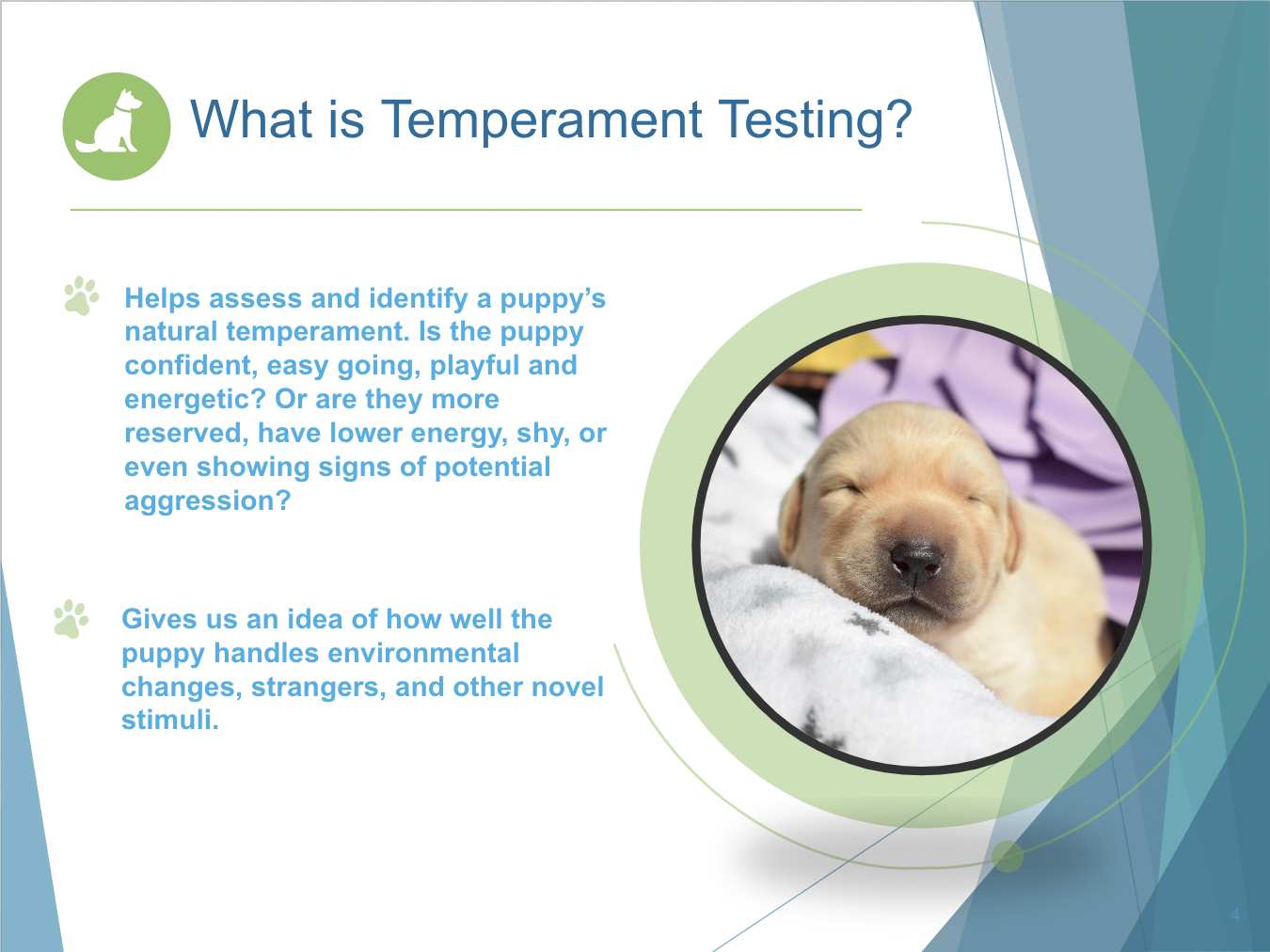 “We get to look at each puppy and the litter as a whole because that’s great data for our breeders. We can see what’s trending. The particular test that we use helps us to see how the puppy reacts to different environments and how it reacts to different people, different stimuli, novel objects and also different stressors.
“We get to look at each puppy and the litter as a whole because that’s great data for our breeders. We can see what’s trending. The particular test that we use helps us to see how the puppy reacts to different environments and how it reacts to different people, different stimuli, novel objects and also different stressors.
“Typically, you wanna do them between seven and eight weeks old. That’s really the prime time to do it. If you’re being really picky, 7 1/2 weeks old is prime. You’re right at their sponge stage. They’re really coming into their own behaviors in the litter, finding their social status as well as right before they go into their first fear period, too. And that’s essential.
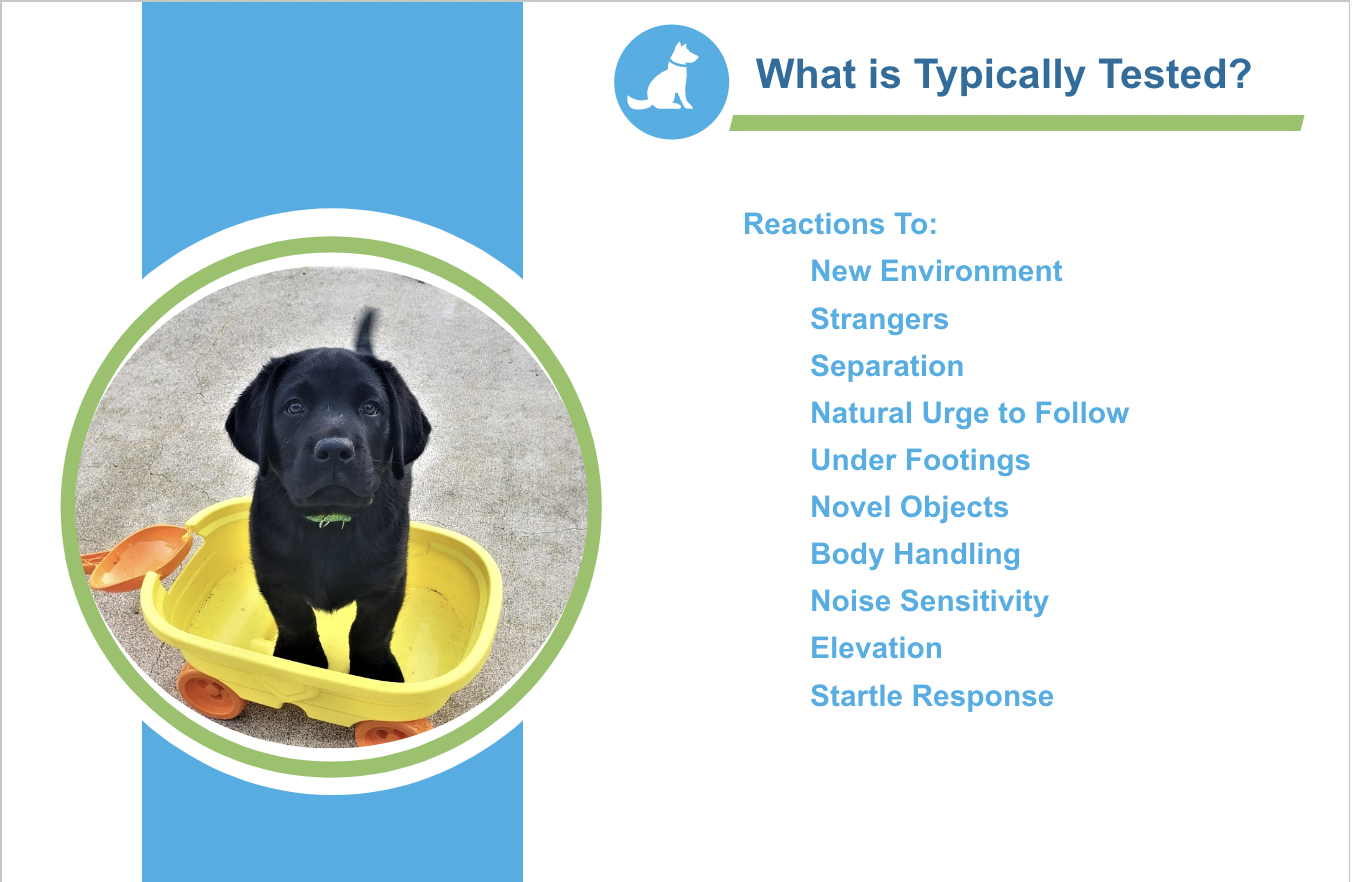 “(Temperament testing is) great for private breeders as well. For you guys to be able to identify which puppies will be successful in a private home or a show dog home or a sport home, I mean our ultimate goal both of us, you know, whether you’re a school or a private breeder, the ultimate goal is to set up these puppies for success, to set up our families and our clients for success. We want that puppy or dog to stay in that home for the rest of its life. This is how we do that.”
“(Temperament testing is) great for private breeders as well. For you guys to be able to identify which puppies will be successful in a private home or a show dog home or a sport home, I mean our ultimate goal both of us, you know, whether you’re a school or a private breeder, the ultimate goal is to set up these puppies for success, to set up our families and our clients for success. We want that puppy or dog to stay in that home for the rest of its life. This is how we do that.”
563 – New Tufts University Course: Breeders Teaching Veterinary Students
New Tufts University Course: Breeders Teaching Veterinary Students
Gale Golden and Susan Patterson join host Laura Reeves for a conversation about the new and exciting AKC Tufts Whelping Program that provides information to veterinary students about dog breeders.
Golden, the AKC coordinator for the program, said that the growing difficulties with finding breeder-friendly veterinarians was a huge concern for her.
“As breeders, we’ve faced many challenges and still face many challenges continuing our right to breed dogs here in the United States,” Golden said. “And one of the biggest challenges has been not only the lack of veterinary care, but the lack of understanding of the purebred, responsible dog breeder and how we work and operate. And that has led to, in some instances, lesser care breeders have available to them or even, in emergency situations, outcomes that weren’t the desired outcomes.”
Change the Conversation
Patterson, who has worked with a similar program at the Ohio State University, noted that “we need to change the conversation at the vet school level. How do we show that students, who most likely have never whelped a litter, will never do anything but triage, what a responsible breeder does, what their parameters are, how they make their choices, and how do they whelp their puppies.
“So, we are going directly to the students, who have some pre-formed opinions, but they have no experience. And we are sharing super transparently all the good, the bad, the ugly. We’ve worked with (the staff advisor) to develop what they call a selective, which in normal academic terms would be called an elective. They get to choose. And so, this last semester we had three students, this semester will have five.
“The other thing we’ve done that I think has added tremendously is we’ve not just focused on these students, but we have opened up our monthly roundtables to all interested vet students and we have brought in veterinarians. We had them in the classroom and we did have a virtual crop and dock just because of timing.
Talk About the Hard Things
“So, we’ve addressed the hard things. We’ve talked about what it takes to produce a puppy that is going to be healthy. And why we do the testing, why we make the choices, why temperament and different breeds. And so they’ve been able to ask us really hard questions. And I think the interaction has been very positive.”
“The total lack of understanding of what a purebred dog was and how they came to be and why they came to be” was an “aha” moment for Golden. She noted that one of the important topics covered in the course is the breed standard. “What is the breed standard and how did it come to be. The fact that they didn’t know was a real aha for me.
“The other thing I don’t feel like they really understood was how we preserve a breed. And as I’m sure most everyone here knows, French Bulldogs have been just bombarded with every kind of influence from outside the breed gene pool there could be. And it’s like a breed being attacked on steroids, you know, from fluffy to pink. It all exists. One of the scary statistics for this breed is last year there were 32,000 Frenchie litters registered with the AKC. 294 were parent club members, 294 out of 32,000. And since DNA really can’t accurately show us exactly what’s behind a dog, after a few generations of breeding to Frenchies, it looks like it’s a purebred Frenchie.
“Another aha for me was the health testing process, the Orthopedic Foundation for Animals, that it exists. What kind of data was there, who loads that data and that it is a partnership with veterinarians and breeders that actually populates that database and how we use it to make improvements. So those things were major ahas for me.
“The preservation message, however, is one that resonates for us. We don’t tell our own story. You know, we’re kind of invisible. There might be 90,000 of us in Massachusetts playing dog sports, but I find out legislatively many times we’re invisible. You know, the fact that we let other people tell our story is a problem.”


